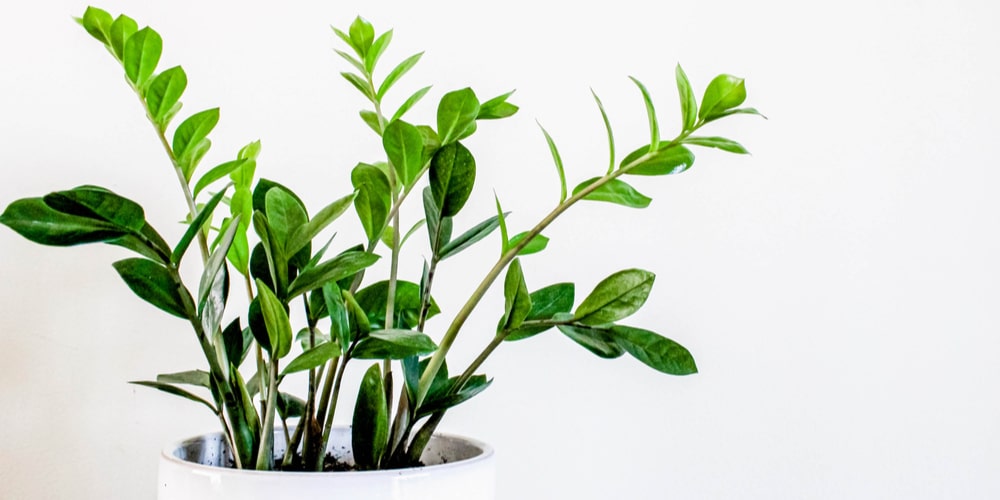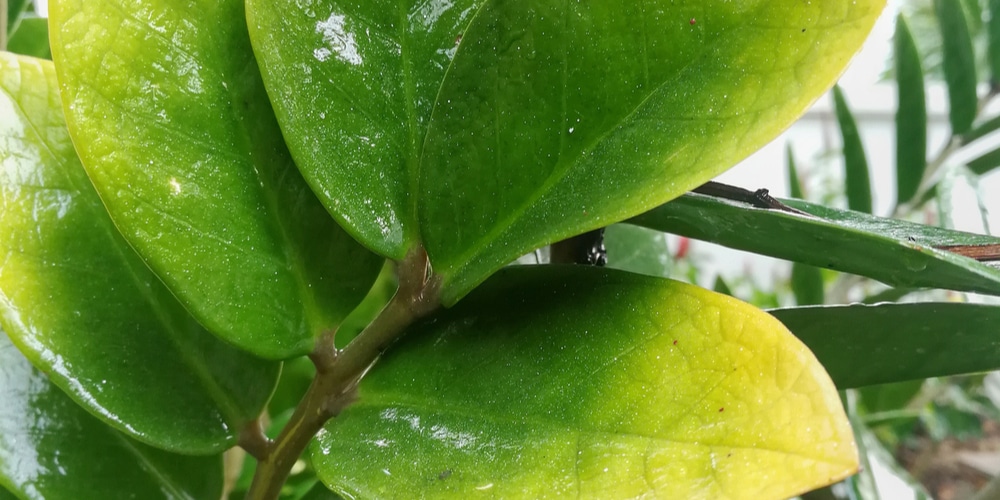The ZZ plant or Zamioculcas zamiifolia has a reputation for being nigh-indestructible and is perfect for beginners or those who are still growing their green thumbs. The perennial houseplant has remarkable green and shiny leaves that spread out in a dramatic way.
One day you might find that zz plant yellow leaves have formed. What could have caused it, and how do you fix it?
5 Reasons Why Your ZZ Plant’s Leaves are Turning Yellow

Too Much Water
It’s easy to fall in love with the Zanzibar Gem plant, with its tame growing habit and beautiful, dark green foliage. Since it’s mostly kept around as a houseplant it gets more attention than the others, and beginners tend to reach for the watering can whenever they see their ZZs.
This watering habit can prove to be fatal, however, since the ZZ plant doesn’t need that much irrigation. In fact, the more you ignore them the better their overall health. Generally speaking, ZZ plants only need water when the soil is completely dry, and you can get away with twice a month watering sessions or even less, depending on its environment.
Too much water in the soil and roots lead to rot, and when this happens your zz plant’s leaves turn yellow and eventually die. Once you notice a few leaves are turning yellow and the soil is overly wet, immediately stop watering and allow the soil to dry out.
Infection from Pests and Diseases
Pests and diseases can afflict healthy plants and cause leaf yellowing and leaf spots, among others. The degree of damage depends on how long the disease or pest has infected your ZZ and if it was healthy, to begin with.
It’s worth noting that overwatering can lead to fungal diseases and yellowed leaves. Similarly, fungus gnats, mealybugs, aphids, scale, and spider mites can drink the sap of your Zanzibar gem houseplant and make it weaker. If you see black spots, yellow mushy foliage, or drooping leaves then it’s most likely plant disease.
To fix this zz yellow leaf problem you should observe a proper watering regimen and continually inspect and get rid of pests.
Stressed Due to Extreme Environment
ZZ Plants can tolerate low-light conditions, but that doesn’t mean that they’re immune to environmental changes or stress. Just like a plant experiences stress when they’re transplanted or exposed to extreme heat or cold, your ZZ plant can start exhibiting yellowed leaves when it’s not in a good position.
Is your ZZ near a window that gets chilly drafts, or near a heat-emitting source such as a radiator, oven, or furnace? Then you can try to eliminate the possibility of having zz plant yellow leaves by moving it to another location.
Unfortunately, there’s nothing you can do to change the color of the leaf once it’s turned yellow. However, if no new yellow leaves appear then you’ve probably fixed the issue.
Needs Fertilizing
Yellowed leaves in a ZZ plant can also mean that it’s not getting enough nutrients in the soil. If it’s been several years since your plant has been in its original pot or container, then it may mean that your plant needs to get fed and possibly repotted.
Zamioculcas zamiifolia can benefit from feeding once or twice per growing season. If you think your plant needs fertilizer, you can give it a balanced NPK mix of 10-10-10 liquid product that’s diluted to half strength.
Afterward, wait a few days to a week and see if the condition improves. You can also repot your root-bound ZZ plant in a bigger container and put it in a well-drained potting mix that’s generously amended with compost.
Not Enough Light
A ZZ plant can survive a few weeks to a month in low light conditions, but in extended periods of darkness, your Zanzibar Gem will start having pale green or almost yellow leaves.
The best spot in the house for a zz plant is one that gets bright indirect light throughout the day. You can put ZZs near a window or a light source, as well as shaded areas such as porches and decks, and the plant will be happy for it. The pale foliage should correct itself a week or so in its new location.
